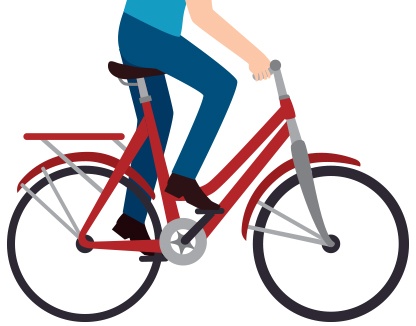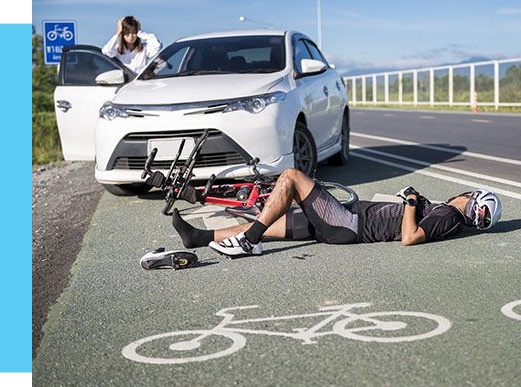Sharing the Road:
How Drivers Impact Bike Safety


PEOPLE
Research reveals that nearly 870,000 people commute by bicycle, and a majority of bicycle commuters are young and live in urban areas.
As 71% of cyclists who were killed in 2016 occurred in an urban area, the awareness of cyclists, bike safety, and statistics regarding bicycle accidents is useful in supporting further road safety for cyclists, pedestrians, and drivers in the future.
Bicycle accidents often occur due to a range of complications that involve individual, interactional, as well as systemic causes.
On an individual level, accidents can be caused by a failure to follow traffic laws, on an interactional level, accidents can be caused by texting or calling while driving/riding, and on a systemic level, accidents can be caused by a lack of infrastructure on the road that enables both bikers and drivers safety.
The most common causes of bicycle accidents include driver inattention, failure to yield, rider inattention, dangerous road conditions, and riding at night.

According to the NHTSA, around 55,000 cyclists file a report due to an injury caused by traffic accidents annually. Though researchers estimate that this group represents only 10% of all cyclist injuries caused as a result of auto accidents. Further research reveals that:
The possibility of bicycle accidents is often increased due to a lack of education on bike safety and road rules for cyclists and drivers, an increase of both drivers and cyclists utilizing cell phone devices and other technological devices such as headphones, and a lack of road maintenance repair and safe and accessible bike lanes. As bicycle accidents have personal, relational, and economic costs, the need to work systematically to reduce the risks for cyclists on the road is significant.
Why can’t cyclists just drive instead? Why should drivers have to be aware of cyclists when they are taking up space on the road? Wouldn’t it be easier if we just all drove?
Although it may seem both intimidating and at times irritating for drivers to share the road with bikers, the benefits of sharing the road clearly outweigh the nuisance it may cause.
Sharing the road benefits society as a wholeWhen roads become more bike friendly, more individuals may choose to commute by cycling which would result in less traffic, more free parking spots, less air and noise pollution, and better road conditions as they face less wear and tear from car tires.
Sharing the road benefits the environmentBicycles require no fuel, no batteries, and can support a reduction of car emissions. Cycling not only reduces transportation emissions, but also reduces traffic congestion, which can cause both air and noise pollution, and reduces the need for petroleum.
Sharing the road benefits you personally (even as a driver)Of course, as a cyclist, the benefit of cycling is clear as they gain more exercise which benefits both their physical and mental health. However, sharing the road and creating safer conditions for cyclists benefit drivers as well. For example, learning how to be more patient with cyclists can lend to less overall road rage. Also, as cyclists advocate for better road conditions and safer conditions for cyclists, this lends to better and safer conditions overall which greatly benefit drivers.
Sharing the road benefits our relationship with one anotherWhen an individual opts to bike rather than drive, they are more likely to be engaged with their surroundings, and they notice things that they wouldn’t within the confines of a car. Therefore, cyclists are more likely to spot local businesses they would like to support which can support cyclists to become more engaged in their local community.
Now we agree that cyclists and drivers can and should have more safety and accessibility in sharing the road, what should cyclists do to prevent accidents and to protect themselves whilst on the road?
How can drivers be more aware of cyclists and ensure that they do not cause accidents with cyclists?
What can cities/governments do to support cyclists and bike safety for their citizens?
The overall number of cyclists has continued to increase throughout the years. For example, the number of cyclists in the United States increased from 43 million to 47.5 million between 2014 and 2017. As biking will become more and more popular in the United States, it's imperative for all, pedestrians, drivers, and cyclists alike, to advocate for bike-safety initiatives in your local city and to take all necessary measures to ensure safety for all.
Happy and safe Traveling!